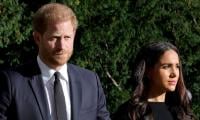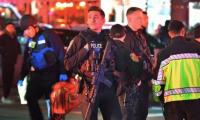Karachi: Not alien to faith-based attacks in Punjab, some of them extremely brutal to say the least, the Ahmadiyya community residing in Karachi was also not spared the wrath of extremists as it witnessed a series of attacks in 2015, observed the community’s representative body in its annual report.
Compiled and published by the Jamaat-e-Ahmadiyya (JA), the report brought to fore the significant increase in hate propaganda against the community in just last year. As per the data, in 2015, two members of the Ahmadiyya community were fatally targeted in Pakistan, while the number was considerably higher - 11 - in 2014.
The report further maintained that 323 Ahmadis had so far survived murder attempts, while 27 worship places of the community had been demolished; 32 sealed; 16 illegally appropriated, whereas 39 graves of Ahmadis had been desecrated and bodies of 65 have been refused a burial in mixed cemeteries to date. “Institutions responsible for ensuring that laws are implemented are successfully being manipulated by the community’s opponents,” opined JA’s spokesperson Saleem ud Din. “Instead of upholding the law they continue to cave in to the demands of the extremists.”
The community was declared non-Muslim in Pakistan through a constitutional amendment in 1974; the law barred them from identifying themselves as Muslims and preaching the religion in public.
The constitutional ban also prohibited the community from referring to its worship place as a mosque, for the term was used to describe a Muslim place of worship.
Karachi attacks
Interviews with Ahmadi community leaders in Karachi suggest that around 20,000 Ahmadis live in Karachi; however, over a 1,000 have migrated from the city.
Thirty-year-old Nauman Najam was killed by unidentified men on March 21, last year, while he was tending to his shop located in Malir.
According to the report, three of the man’s relatives including his grandfather and two uncles were killed in anti-Ahmadi riots that erupted in Gujranwala, in 1974.
On October 11, in Gulshan-e-Iqbal, Saleem Rafaqat and two of his nephews Moaaz Ahmad, 20, and Shamir Ahmad, 17, were shot at and injured when they were returning home from their worship place.
The attack was claimed by Daulat-e-Islamia Khurasan - a group not well known.
While on November 18, Chaudhry Munir Ahmad was fired at by two unidentified men on a motorcycle; the attack left him severely injured.
Ever since the ban on usage of Islamic symbols and practices for the community was imposed – in 1984 – 248 Ahmadis had been killed in the country, of which 30 were targeted in Karachi.
Discrimination
With hate propaganda against the community intensifying with each year, literature encouraging the community’s boycott was being distributed with impunity in both Punjab and Sindh.
A socio-economic boycott of Ahmadis was only the tip of the iceberg, as incitement of hatred against the community went as far as publically calling for murder of the community’s members.
“A threat to the lives of Ahmadis was as imminent a fact as the sun is to rise every day,” the spokesperson stated.
“It was clearly mentioned in the National Action Plan speeches inciting hatred as well as distribution of literature will be curbed and action will be taken against anyone found guilty of the acts. But it seems the plan was yet to materialise.”
According to the spokesperson, it was precisely this lack of action that encourages the militants to carry out attacks on the community, wherever and however, they like.
The government’s discrimination went as far as including names of Ahmadi voters in a separate list for the local body elections.
The community attempted to clarify their stance on the issue but the efforts went in vain as none of the newspapers agreed to publish a statement on behalf of the community.















